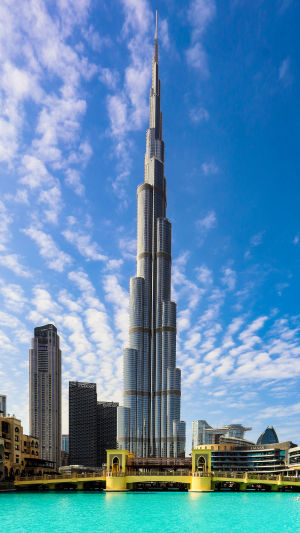Dubai, a thriving city in the United Arab Emirates, stands out for its opulence, modernity, and breathtaking architectural marvels.
Amidst the city's skyline, a colossal tower transcending time and space graces the landscape – the Burj Khalifa.
Chapter One: A Pinnacle Achievement
1.1 Inception of the Burj Khalifa
The construction of the Burj Khalifa commenced in 2004, spurred by Dubai's distinctive geographical location and economic prowess. Determined to establish its prominence on the global stage, the city embarked on the construction of an iconic structure in the desert.
Collaborating with architect Adrian Smith, the SOM architecture firm created this awe-inspiring building. On January 4, 2009, the Burj Khalifa was officially unveiled, soaring to a height of 828 meters (2,717 feet) and claiming the title of the world's tallest building.
1.2 Exemplary Construction and Design
The Burj Khalifa's design integrates advanced construction technologies and concepts. Its glass curtain wall utilizes specialized materials, ensuring both aesthetic appeal and durability while effectively insulating against Dubai's scorching climate.
The tower's structure combines steel and concrete, engineered with precision to withstand high-altitude winds and earthquakes, establishing a robust foundation for its stability.
Chapter Two: Summit of Dubai
2.1 Tourist Magnet
Beyond its towering height, the Burj Khalifa stands as one of Dubai's iconic attractions. The observation deck atop the tower offers visitors an expansive view of the entire city, providing an intimate experience of Arabia's prosperity and modern allure.
Whether during sunset or nightfall, the Burj Khalifa transforms into a captivating spectacle, making it a must-visit destination for tourists.
2.2 A Global Pinnacle
The Burj Khalifa symbolizes not only Dubai's grandeur but also stands as a global landmark. Surpassing Taipei 101 and the original Twin Towers, this architectural marvel claims the title of the world's tallest building, setting a new benchmark in the history of human architecture.
This remarkable achievement not only reflects humanity's relentless pursuit of architectural limits but also establishes a new standard for cities worldwide.
Chapter Three: Economic Symbolism
3.1 Economic Impact of Landmarks
The rise of the Burj Khalifa signifies not just architectural triumph but also mirrors Dubai's economic prosperity. As the Middle East's financial hub, Dubai attracts a multitude of international businesses and investors, with the Burj Khalifa becoming a symbol of the city.
Its presence not only elevates Dubai's international profile but also generates substantial income from tourism and business activities.
3.2 Unveiling the Skyscraper's Saga
The construction of the Burj Khalifa entailed substantial investment and coordination, with a vast team of construction and engineering professionals working tirelessly behind the scenes.
From design to execution, the entire process brimmed with challenges and innovations. The ascent of this colossal tower is not merely a testament to architectural success but also represents the amalgamation of human ingenuity and technological prowess.
Chapter Four: Environmental Stewardship and Sustainability
4.1 Green Architectural Philosophy
The Burj Khalifa's design and construction prioritized sustainability and environmental consciousness.
Employing a range of eco-friendly technologies, from energy-efficient glass to solar panels, the Burj Khalifa not only minimizes the consumption of natural resources but also serves as a sustainable architectural model for cities worldwide.
4.2 Shaping the Future Landscape
The green building concept embodied by the Burj Khalifa offers a valuable blueprint for cities globally. As the world grapples with escalating climate change, urban development must increasingly prioritize sustainability for the coexistence of human society and the natural environment.
The Burj Khalifa's experience provides a practical case for other cities to emulate, guiding future urban planning and construction endeavors.
The ascent of the Burj Khalifa not only transformed Dubai's skyline but also etched a significant chapter in the annals of global architecture. It serves as a symbol of a city's grandeur, a testament to humanity's pursuit of height limits, and a beacon for environmental protection and sustainability.
Beyond being a monumental structure, the Burj Khalifa stands as a testament to human achievement, inviting us to gaze upon its peak and envision the boundless possibilities of our collective future.





